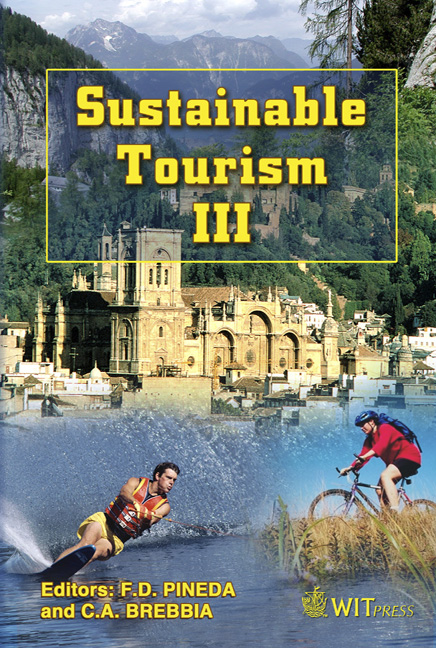Tourist Development And The Environment: The Case Of Cephalonia And Ithaca
Price
Free (open access)
Transaction
Volume
115
Pages
10
Published
2008
Size
1,739 kb
Paper DOI
10.2495/ST080191
Copyright
WIT Press
Author(s)
D. G. Prokopiou, B. S. Tselentis & D. Bousbouras
Abstract
The tourist industry is one of the most important economic activities in Greece. The country receives over 14 million visitors per year, thus managing to double its population within the peak season. These numbers no doubt create some speculation as to the quality of the tourist product offered, but more importantly, concern is expressed by many, as to the impacts on environmental health and ecosystem stability. Many researches and scientists, over recent years, have studied the environmental impacts of tourist development, since it is well documented that when tourist development exceeds the capacity of the natural environment, many adverse effects arise, thus undermining the very substance of the tourist trade and associated services. Tourist development requires a multi disciplinary approach, since it is a function of various issues, such as natural resources and ecosystems management, the effects of human activities on fauna, flora and the coastal zone, economic and social aspects etc. For the Greek Islands, the environment, both natural and man made, plays a vital role for the sustainable development of the industry. The purpose of this paper is to apply the principles of carrying capacity assessment to Cephalonia and Ithaca islands in an effort to highlight the importance of such a tool in developing long-term sustainable policies for such communities. 1 Introduction The World Tourism Organisation (WTO) proposes the following definition of carrying capacity: \“The maximum number of people that may visit a tourist destination at the same time, without causing destruction to the physical, economic, socio-cultural environment and an unacceptable decrease in the quality of visitors’ satisfaction” [1].
Keywords





